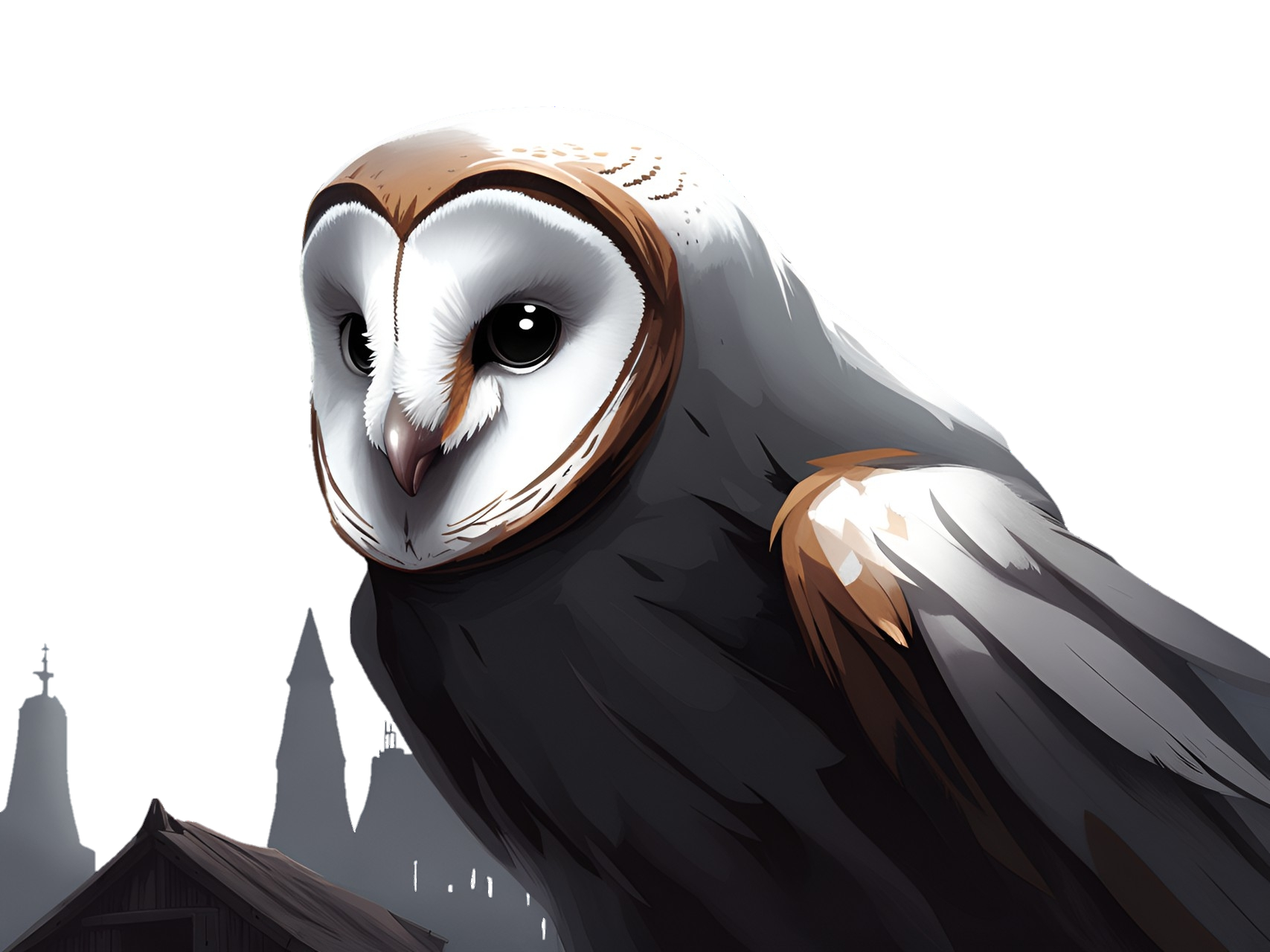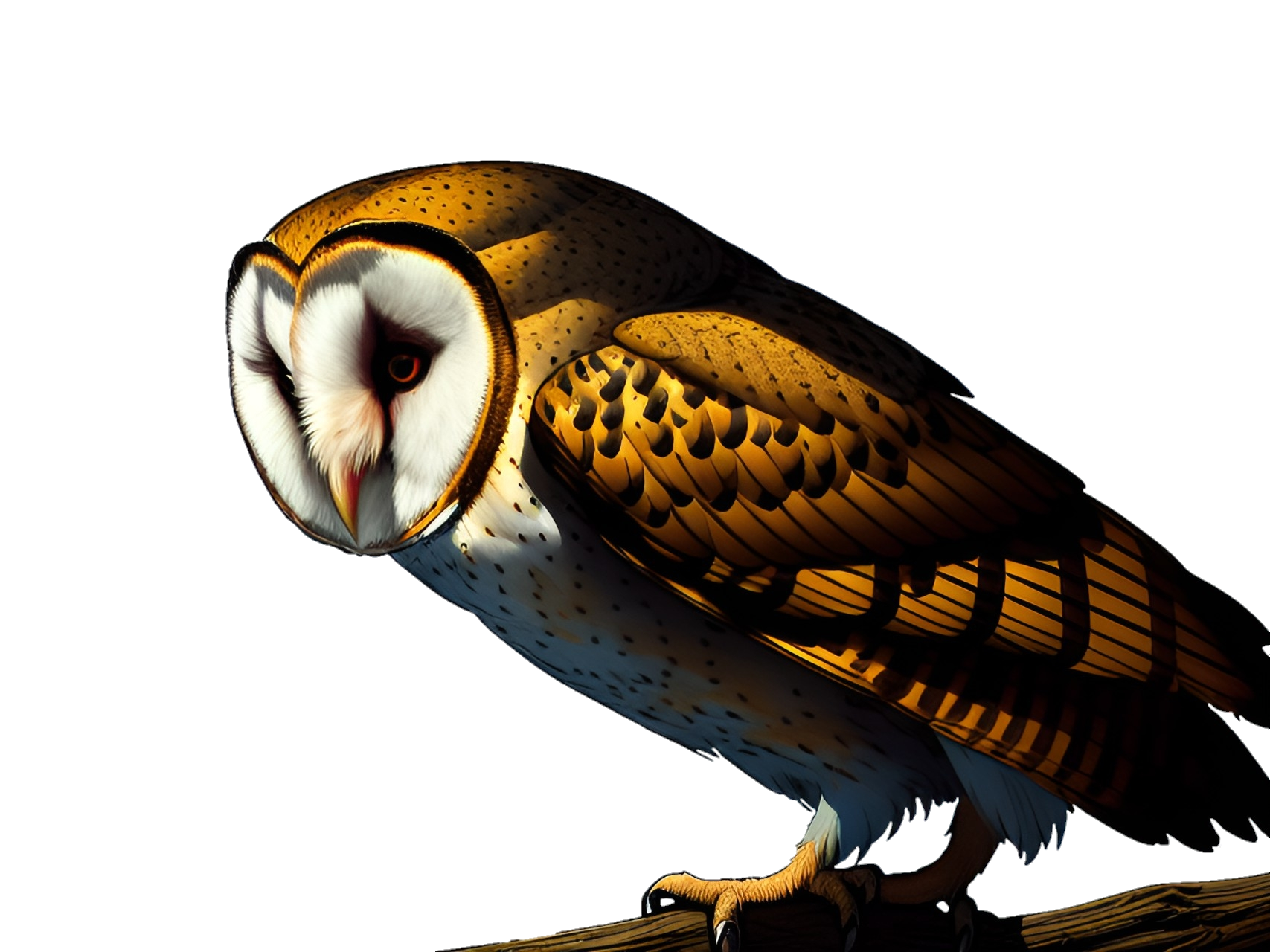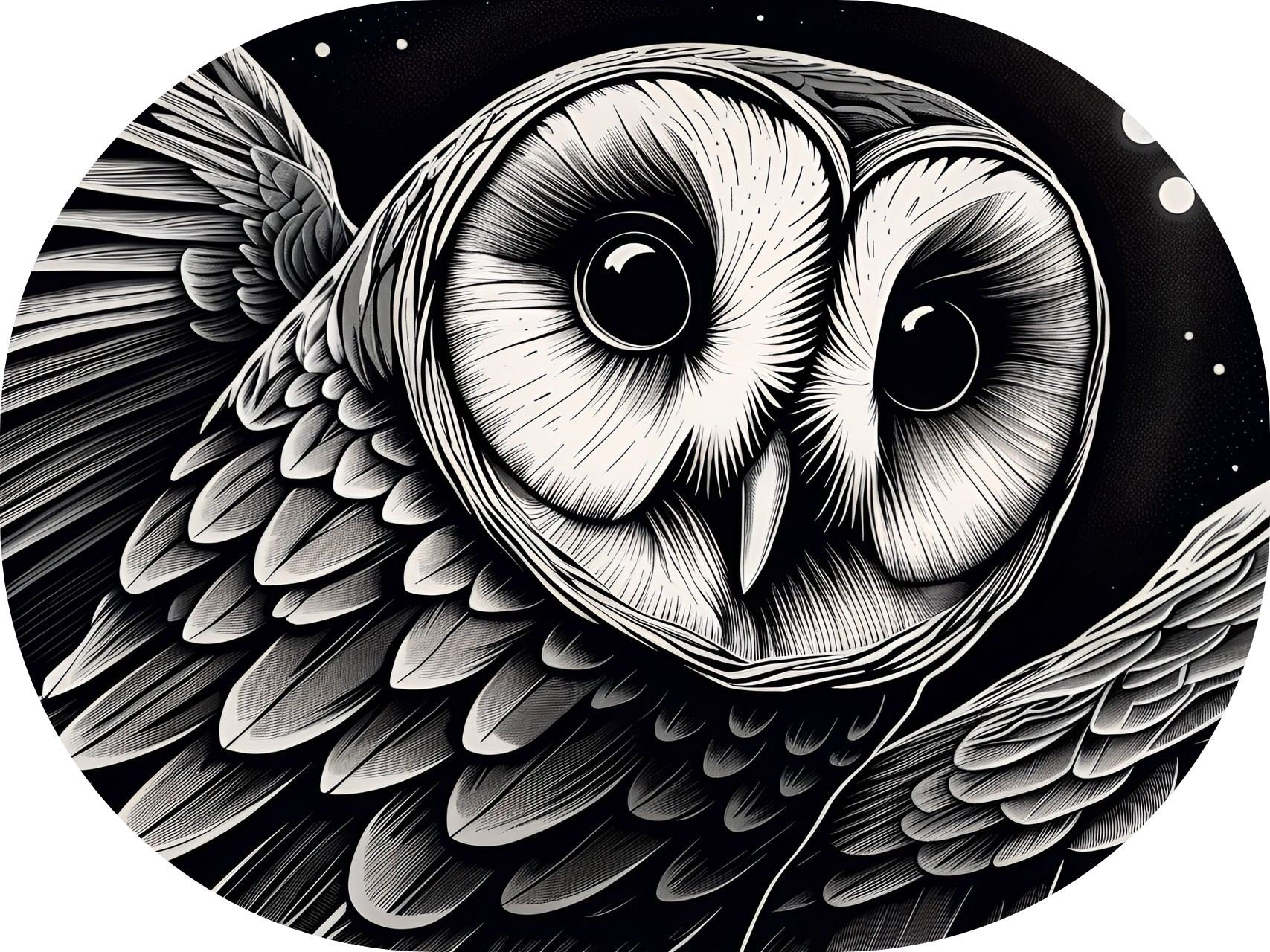Strix Owl
These are perhaps one of the most common species of owl in Eluziar and Alkelbulan, a small but effective hunter common to woodlands and wide open spaces like farmland. Like most owls, they are nocturnal and prefer hunting in as dark an environment as possible thanks to their excellent hearing and silent flight. They especially enjoy hunting in the Tenebrous Chain for this reason but they easily adapt to almost any habitat. Strix owls are both held in high regard and seen as ill omens depending who you ask. They are most sought after as familiars for both their excellent perception and their ability to peek into either Irkath's Plane or Kanilwyr's Plane. Mages, especially bloodmages, often choose them as their familiar or at least as a beast companion!
|
First AbilitySonildaz's Ear Those with Sonildaz's Ear are able to hear any sound within a certain distance, regardless of volume or hindrances. With practice, they can control which sounds they can focus on or ignore. Used as their main sense when hunting, especially in total darkness. Second AbilityIrkath's Vision Owls with Irkath's Vision are able to enter a meditative state, astral projecting into Irkath's Plane. They can peek through portals of the plane and can parse through knowledge and memories stored there. It can be difficult to maneuver Irkath's Plane, which is a web of cryptic and vague metaphors. Irkath does not give up his secrets freely, enjoying riddles and puzzles. Kanilwyr's Vision Owls with Kanilwyr's Vision are able to enter a meditative state, astral projecting into Kanilwyr's Plane. They can peek through portals of the plane and can parse through knowledge and memories stored there. Kanilwyr's Plane is very well organized, like a library, but Kanilwyr doesn't allow those perusing her collection to view memories of other people without permision which she is instantly aware of, as the keeper of all memories!
Azowyr's Movement Those with Azowyr's Movement are able to walk on, step on, swim through or move using dark enough shadows regardless of gravity or lack of physical surfaces. Shadows can act as a solid foothold for them. They can also breifly turn their body into shadow, travel along exiting shadows and reform elsewhere, even fitting through the tiniest of cracks. However, they can be killed by light in this state and are capable of being restrained using shadow magic, shadows solid to their touch. Azowyr's Manipulation Using Azowyr's Manipulation, these owls are able to manipulate, reshape, intensify and control shadows present in their environment. Most used to intensify shadows and darken their environment amid a hunt or to escape. Ineffective during the day when shadows are scarce.
|
Anatomy |
|
Habitat |
These are one of the most widely distributed owl species in Emynea but this particular variant calls northern Alkelbulan and central Eluziar home. They can be found along the coasts, forests and mountains of the Shamsi Desert and all across Sesli Plato, Kemet, Birit Narim, Parsa, Flumen Pontem, the Eluzian Valley, Ural'skaya Belt and the Tenebrous Chain. While they can be found in nearly every kind of habitat, they prefer open woodland, heath and moores, thriving best in the Tenebrous Chain. Strix will roost in tree hollows, caves, wells, thick foliage and abandoned buildings during the day. They also enjoy open country such as farmlands, grasslands and light woodlands, usually staying below altitudes higher than 6,600 ft (2,000 m). |
Diet |
Strix owls are nocturnal and crepuscular hunters, flying close to the ground and hunting small mammals with their incredible hearing. They will dive to the ground to capture prey, their long and slender talons perfect for plucking up rodents from thick foliage, sand or snow! Broad wings also allow them to maneuver and turn swiftly. Hunting best in total darkness, they navigate and identify prey mostly by sound. Between asymetrical ears, a heart-shaped facial disk which draws in sound and powerful ears, they have one of the best senses of hearing in Emynea, before even utilizing their racial magic. Adding to their adaptions are specialized feathers which render their flight silent, gliding quietly in the darkness. These qualities have only been amplified by their kaithur!
Strix mainly hunt rodents like voles, gophers, shrews, mice and rats. Baby rabbits or hares, muskrats, bats, frogs, lizards, fish, spiders, birds and insects are also taken opportunistically. They prefer to hunt in open spaces such as grasslands and fields, set atop low perches. Other birds like Itri Raven have a tendency to mob and steal their kills so some owls modify the timing of their hunt to evade competition. Because of their high metabolic rate, they need to eat a considerable amount of food to survive, sometimes up to fourteen percent of its body weight in a day! For this reason, they kill more than they can eat and store food for when prey is scarce. This habit has led to farmers valuing them as ideal pest control! Strix owls have a unique call rather than hooting as other owls do, a piercing and ear-splitting schreech which is unsettlingly long and drawn out. By contrast, males are more prone to shrill twitters, purring and chirruping. Yet when they feel threatened, Strix will flail onto their back and kick with sharp talons--its a poor choice to approach them in this state! Despite their skill as a hunter, they are not an apex predator. Other birds such as eagles, hawks and larger owls may still prey on them alongside much larger predators. |
Life Cycle |
Strix owls are monogomous, mating for life and only forming new pairs if their partner dies. Despite this lifelong pairing, they prefer to roost in separate nests but still share their home range with each other. They only come together during breeding season, preferring a solitary lifestyle. Regularly cycling between several nests throughout their territory, they pick a single large nest for their brood. In the time leading up to breeding, the male pampers the female, feeding her and showing off with dramatic flight displays. Younger and newer pairings are especially prone to these displays as he tries to strengthen their relationship. Once she reaches an appropriate weight, he enacts a ritual presentation of food before they mate.
She lays around four eggs, nesting within hollow trees, abandoned buldings and cliffs. Her mate will continually provide her with food, even piling it next to her as she incubates the eggs. This takes around thirty days, the eggs hatching over the course of several weeks rather than all at once. Chicks will shuffle around the nest after a week, their mother shredding up food for them. Strix chicks are covered in a grey-white down which fails to cover them completely, appearing more and more naked as they grow bigger. They will not sprout quills until three weeks! Their mother will leave the nest when the chicks reach four weeks old, nesting elsewhere but still returning to care for them. Fledgelings begin to leave the nest for the first time at six weeks old but continue to depend on their parents until they are thirteen weeks old, their mother teaching them how to find and catch prey. Strix owls are short lived, most dying witihin their first year of life while the rest only live 1-4 years. Despite these abysmal averages, they are fully capable of living for more than 25 years or more! |
Mythology |
Owls in general have a complex place in Emynean culture and lore, considered a symbol for both Kanilwyr and Irkath. There is a stark contrast beween those who regard them highly and those who hate and fear them.
Sometimes seen as birds of evil omen, called by names such as demon owl, death owl or ghost owl. The Espanol believe these birds hate light, putting out lanterns in holy sites to leave them vulnerable to evil spirits. Their eerie call is considered an announcement of death, hearing them for several nights meaning someone will lose their life. It is believed to be an ideal familiar or beast companion for dark casters and evil mages, sent by their masters to kill their enemies or gather their blood. The Italiani as well associate them with death or illnes. They are attached to the unknown, Irkath, as they are beasts which appear in darkness, when humanity is helpless and blind. People hear their eerie call and feel death is iminent. The Arabiyy also view them as a bad omen, believing them evil spirits which carry away souls in the night or are the restless souls of the un-avenged. They are viewed as bad luck, announcers of death and desolation. To the Quiris and Hellenes, these owls are assocated with Athena, goddess of wisdom and the Quiris alias for Kanilwyr. These owl are seen as a protector, accompaniying armies into war. It is believed they warn people of incoming disaster and deaths of important people. Bloodmages practicing true magic were once believed to transform into owls in order to collect the blood of victims for their magic but it was far more common for them to utilize owls as their minions in order to carry out these tasks. In Parsa, the Strix is a sacred animal associated with Lithmor and they are also well regarded by the Daoine as Irkath's messengers. |












Comments